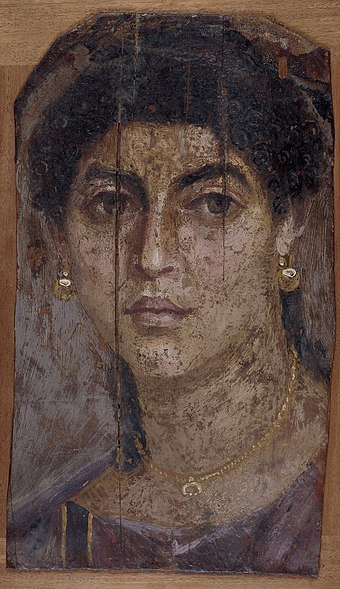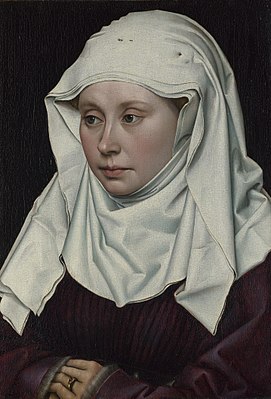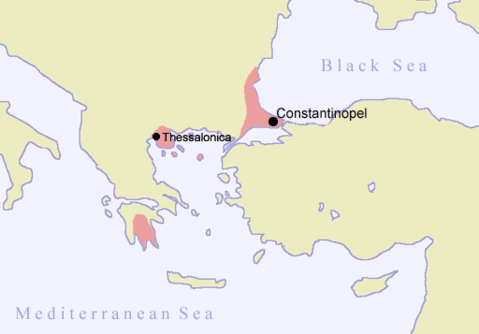YARGB points to a remarkable collection of Roman portraits, the Fayum Mummy portraits:
These are examples of Fayuum Mummy portraits. They're paintings, from the Hellenistic era Egypt, that were attached to mummies and are meant to depict the deceased. However, from the above link:He has a collection of these that you can go look at, dating roughly the first century AD to the third century. Egypt's dry climate preserved them in a way that wasn't there in rainier climes. The level of expertise ranges from so-so to excellent, and it entirely disappeared with the Empire.
On first inspection the Fayum mummy portrait paintings look like true-life depictions of actual individuals, but closer analysis reveals that the 'individual' features are sometimes no more than repetitive, formulaic renderings. In other words, quite a few of the portraits appear to have been created from a small number of facial templates, disguised by the use of different fashions, hairstyles and beards.Regardless, they are still the only extent collection of portraits we have of more common people of antiquity, rather than the kings and generals we usually see in ancient art. That said, it was still only the very upper crust of society that could afford them.
Here's another one that YARGB does not have. My opinion is that this was the greatest portrait (that we know of) for 1500 years, faded by 1900 years. It dates from around the reign of Emperor Claudius, or possibly Nero.
Clearly she was from a wealthy family. She died young, a fate shared by the great and the common. You have to fast forward to the Renaissance for similar workmanship. Here's one by Robert Campin in the Netherlands around 1430:
I find the Roman one more realistic - less formalized, or formalized in a less obvious way. That may just be because Roman formalization techniques have been lost over time, while early Flemish formalization techniques are (relatively) fresh. Interestingly, there are very few portrait examples much before 1430, and an explosion soon after. The Renaissance really did come about all of a sudden.
Ironically, when Campin painted this portrait the Roman Empire still existed, although as a vastly shrunken ghost of its former self. By 1430 the Empire was pretty much limited to Constantinople and areas around that. It would be gone in another two decades. Roman aristocrats fleeing the Turks would settle in Italy, taking their books with them. Those books - of the ancient masters like Virgil, Horace, and Cicero - will further ignite the Renaissance and lead to today's modern world.
























